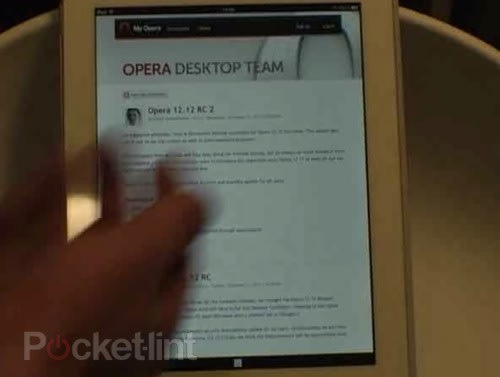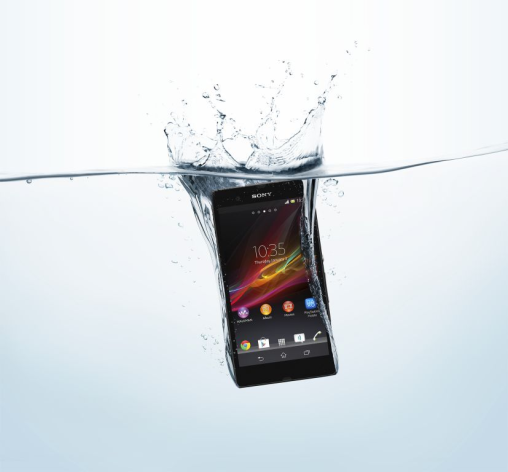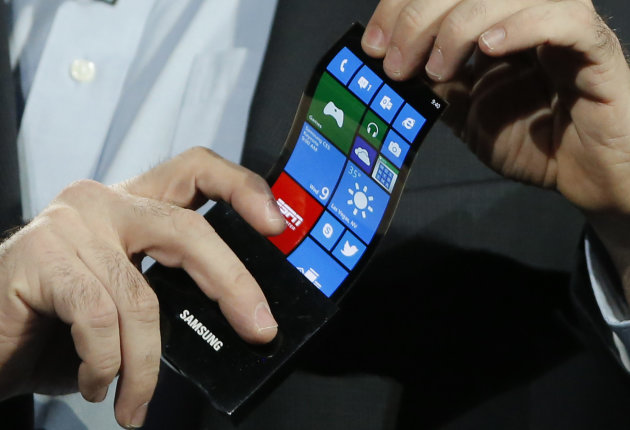Sky video - Panasonic's new 56-inch, 4K OLED television
The television of the future will be far sharper than today's best hi-def sets - and could be voice-controlled and even curved.
This
year's Consumer Electronics Show in Las Vegas showed off new
technologies such as 'Ultra HD' - four times crisper than today's 'Full
HD' sets - and gesture controls, as well as ultra-thin 'Organic LED'
sets.
There was much less fanfare around 3D, and only a few of
the annual headline-grabbing "world's largest" TV sets - instead, Sony,
LG, Panasonic, Samsung and Sharp are focusing on improving picture
quality and hi-tech new functions such as voice commands and web
connections.
Much of the showfloor TV space has been filled with Ultra
High-Definition televisions, which will eventually replace that 1080p
'Full HD' set you watch each night from the sofa.
The most common resolution of 'Ultra HD' is 4K, which has four times the number of pixels as HD.
These
are the small dots making up the screen image and 4K gives a resolution
of 3840x2160 against the current 1920x1080 HD standard.
The TVs can show footage at roughly the same resolution as the cameras used to shoot digital films.
'Ultra
HD' won't come on discs - instead, home users will download the films
via broadband. Sony is to launch a download service in the U.S. this
summer.
Quality though doesn't come cheap. Sony's current 84 inch
4k model costs around £17,000 and despite the Japanese giant promising
to make 4K affordable for everyone, its forthcoming 55 and 65 inch UHD
TVs are sure to be out of reach of most for a few years yet.
It
took at least three years for HD to become affordable and mainstream on
the high street from its CES debut and the same is predicted to be true
of UHD.
Jonathan Marsh, home technology expert at John Lewis,
said: "TVs always spark excitement at CES and this year hasn't been a
disappointment.
"Many manufacturers unveiled Ultra
High-Definition sets at this year's show – the latest TV innovation
tipped to deliver a staggeringly realistic picture and the ability to
show 3D content in better than HD quality.
"As with 3D, Ultra HD
is likely to suffer from the lack of content available, but that could
change quickly. UHD TV will be the standard by 2020."
That lack of content is clear with TV companies only just fully embracing HD and 3D.
Sony
is also developing a 4K version of OLED display technology. OLED has
been used in mobile phones for years and Apple's Retina display was
designed to rival the OLED, which for example is used on the Samsung
Galaxy S3.
However, it is very expensive to produce and LG's new non-4K 55 inch OLED itself costs around £8,000.
And
there's no price-tag on Panasonic's unique 56 inch OLED created by 3D
printing technology, which means if you have to ask, you surely can't
afford one.
Mr Marsh added the trend for the next 12 months will
see British consumers upgrading their screen size. He explained: "Big
screen technology has improved dramatically and as larger TVs become
more affordable, they are fast becoming the norm for consumers who want a
more immersive entertainment experience at home.
"John Lewis figures show 64% of TV sales have been screen sizes of 40 inch plus since August 2012."
Alongside
picture quality and screen size, the other TV evolution at CES
continues to be the slow demise of the remote control and further
attempts to have Smart TVs with apps and the internet on board take over
our lives.
Samsung has enhanced its voice and motion controls
letting you swipe through on-screen menus with hand gestures and
allowing you to ask the TV to put on shows based on their actors.
It
has even brought out a little box called the Evolution Kit that will
plug into existing 2012 models to make sure they're not outdated just a
year after you bought one.
New S-Recommendation technology learns
what you watch and do on your TV to automatically offer personalised
content choices while in a bid to battle Apple TV, owners can now
"mirror" what's on their Samsung Galaxy tablets and mobile phones,
showing it on the bigger screen.
Another attempt to mimic the
success of Apple TV sees Archos bringing out a £99 device next month
that plugs into any HDTV. It will then turn it "smart" by giving full
access to Android and Google Play for games, the internet and streaming
online video.
And in a nod to the future, lesser-known TV
manufacturer Haier raises the prospect of a telly controlled by your
eyes, selecting channels and options by blinking and moving through
menus with the direction of your eyeballs. It's also claiming to work on
a TV controlled simply by thought and brain waves.
However, the
one TV revolution not seen at CES is any attempt by Apple to enter the
television market. Experts are widely predicting 2013 will see the
iPhone and iPad maker unveil its first purpose-built TV set as it makes a
bid to take over our front rooms.





 .
.











